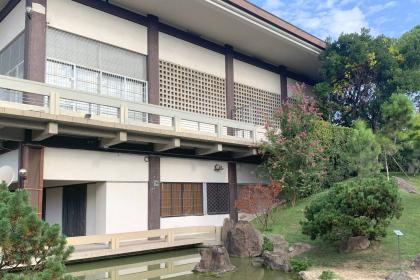
Located in Via Omero, near Villa Borghese, the Royal Netherlands Institute in Rome (KNIR) plays a crucial role in fostering dialogue and cultural exchanges between the Dutch, Italian and international communities present in the city.
A long history of research and education
Founded in 1904, it is the oldest and largest Netherlands scientific institute in another country, recognised as ‘Royal’ in 2004, one hundred years after its birth. Established with the initial aim of studying the Vatican archives - publicly available since 1883 by the decision of Pope Leo XIII - the institute soon embraced new disciplines such as art history, archaeology and the study of antiquities. In an area that is home to numerous Academies, international cultural institutes and museums such as the Galleria Nazionale and the ETRU - National Etruscan Museum of Villa Giulia, the KNIR is today an academic excellence welcoming students and scholars and offering a rich programme of courses, research projects, lectures, presentations and debates.
The architecture of the KNIR: elegance and harmony between greenery and culture
In the splendid setting of Valle Giulia, the building of the Royal Netherlands Institute is a beautiful neo-Renaissance villa designed by the Dutch architect Jan Stuyt in collaboration with the engineer Gino Cipriani, who was later also responsible for the nearby Academia Belgica. Inaugurated in the spring of 1933 in the presence of Benito Mussolini, the refined building houses an important library specialised in archaeology, history and art history of Rome and Italy, which keeps printed monographs, periodicals, online resources, special collections, as well as encyclopaedias, documents, dictionaries, bibliographies, maps, valuable texts, archive material, a small numismatic collection, archaeological and art history photographs, plans and postcards.
The secret garden: a haven of peace and beauty
An enchanting garden, a true hidden jewel, enriches the refined architecture of the villa. Extended in a higher position than the building, it is a place of peace and reflection open to the institute's visitors.
In a free interpretation, its lines recall the classical ones of the 16th and 17th centuries, with the geometries of the elegant agapanthus and box tree beds, which can be admired in their harmony from the villa's first floor.
With its details and the arrangement of plants, the green space creates an enchanting landscape effect that evokes the secret gardens of the past, where you can experience an immersion in nature and timeless beauty among lawns, a few fruit trees, beautiful magnolias, shrubs, hedges and a delightful roses pergola.
Photo Turismo Roma
The British School at Rome

 Condividi
Condividi
Egyptian Academy

 Condividi
Condividi
Romanian Academy in Rome

 Condividi
Condividi
Academia Belgica

 Condividi
Condividi
The Danish Academy in Rome

 Condividi
Condividi
Swedish Institute of Classical Studies

 Condividi
Condividi
Japanese Institute of Culture

 Condividi
Condividi
Information
For opening times and visiting condition, please check the official website.
 Condividi
Condividi
Location
To find out about all accessibility services, visit the Rome accessible section.











































